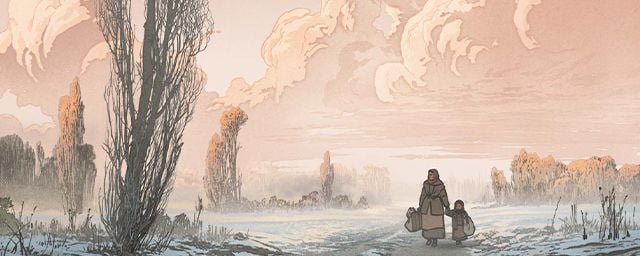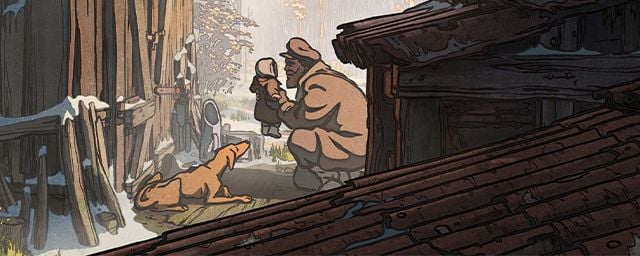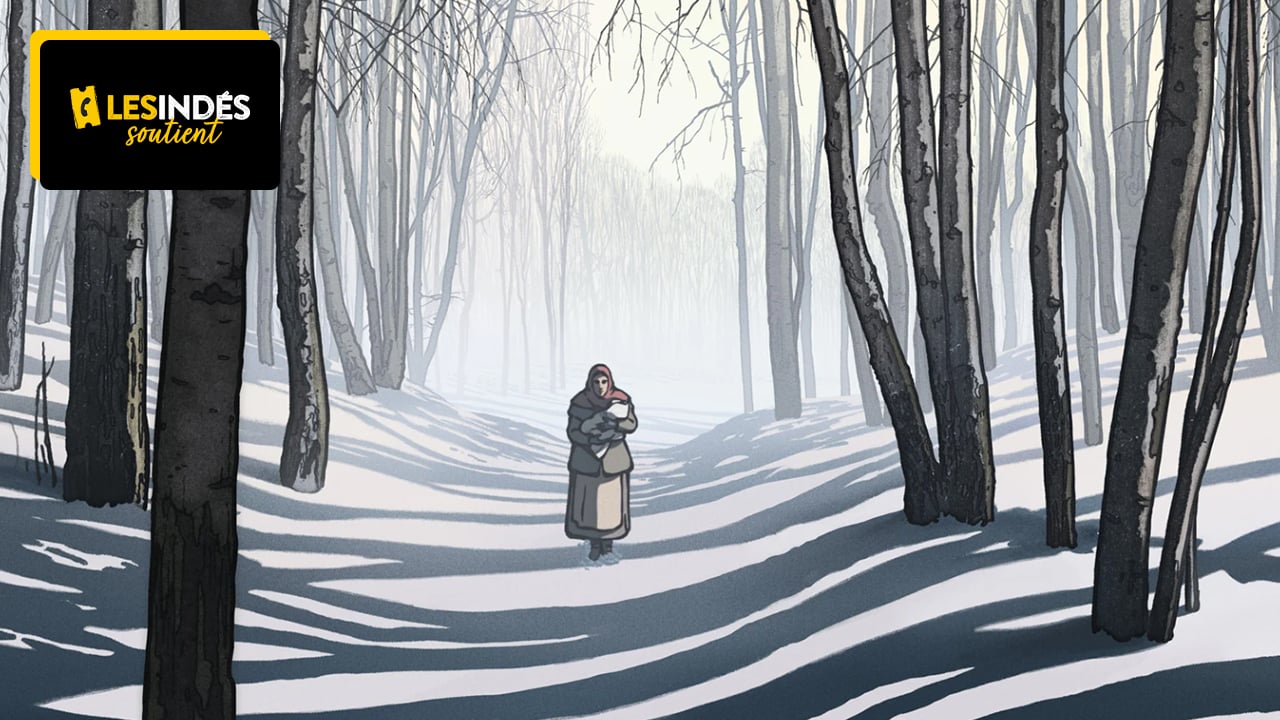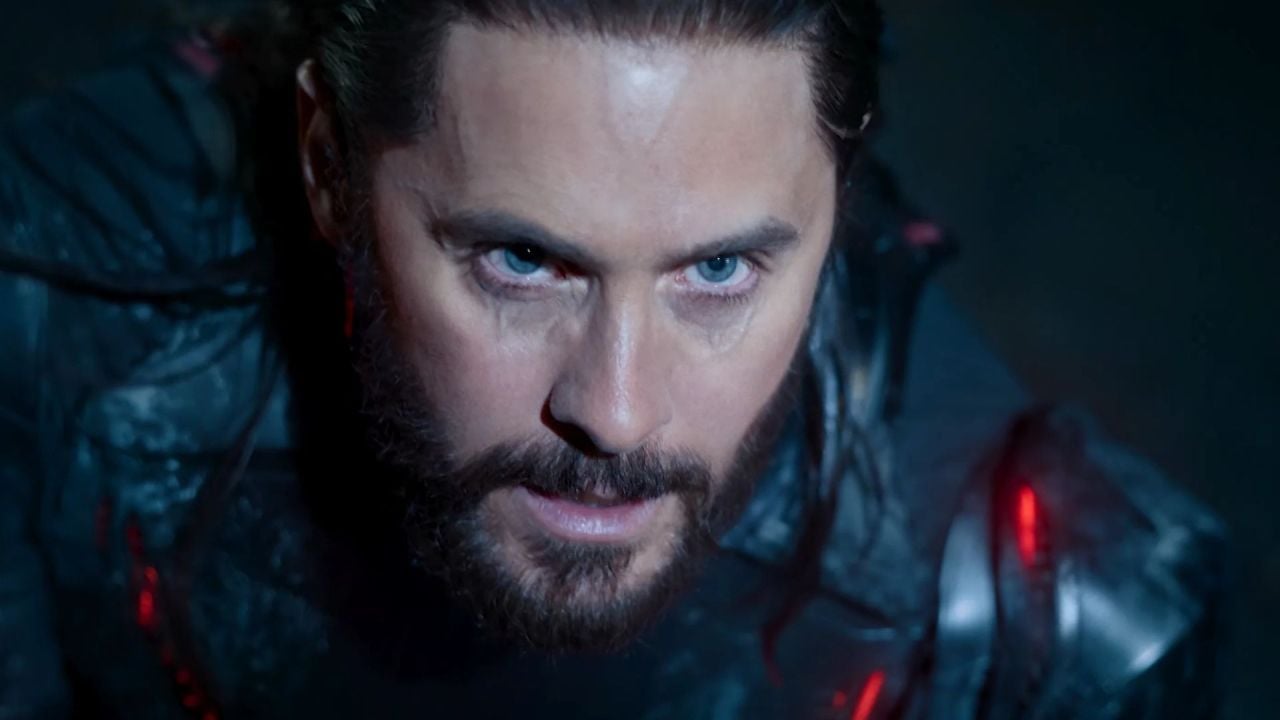An exciting and humanistic tale
Once upon a time in a great forest lived a poor woodcutter and a poor woodcutter.
Cold, hunger, poverty and war everywhere around them made their life very difficult.
One day, a poor woodcutter picks up a child who has been thrown from one of the many trains that constantly pass through their forests.
Protected at all costs, this little commodity will turn this woman, her husband, and anyone who crosses her path, right down to the man who threw her off the train, upside down. Their story reveals both the worst and the best of men’s hearts.
Releases, news, interviews… Find all the latest news about indie films
For the most valuable commodity, his new feature film, Michel Hazanavicius – already known for The Artist and Coupez! – Immerse yourself in the world of painting. Each character saw the light of day under his pencil while his team animated. An atypical approach that reflects the intimacy of the project, especially since the plot of the film interferes with the director’s more personal one.
A deeply personal project
In addition to the visual investment, the director claims that this work deals with intimate aspects of his life: his relationship with the painting and his long friendship with Jean-Claude Grumberg, the author of the original tale. legitimacy.
The aesthetics of the characters also bear a nostalgic imprint. Michel Hazanavicius cites Gus Boffa, an artist of the early 20th century, as one of his main inspirations: his figures, both fragile and hallucinatory, reflect the traumas experienced by the characters, especially in the camps, a stylistic choice that reinforces. movie theme

If the film is rooted in the tragic context of the Second World War, Michel Hazanavicius rejects any “duty of memory”, an issue on which he particularly agreed with Jean-Claude Grumberg, given that this was not their role.
necessary distance
“The most valuable commodity is not a story about horror or camps, it is more than that, Michel Hazanavicius explains. It is a movement from darkness to light, it is a luminous story that brings out the best in man and above all in woman. This is the pursuit of life, and if a film prompts us to remember something or someone, it is right. These men and women who risked their lives to save. It is them that the film celebrates.”
Far from brutal realism, the animation format favors suggestion, allowing the viewer to immerse themselves in a work that is both moving and thoughtful, while maintaining the distance required in animation. Indeed, the director explains that the survivors of the camp disappear, and with them this “documentary” aspect of the films is about this period. Fiction is taking up this theme and the way it is presented in cinema is changing.

The film approaches the Shoah not as a raw subject but as a backdrop against which human history is written. Deported to Poland, The Most Valuable Goods takes place during a time when anti-Semitism and barbarism were ravaging Europe. Trains, pervasive in the imagination of this era, then become a central character.
Michel Hazanavicius is biased to show less in order to say better, thus reserving a much more rewarding place for the viewer, to whom he offers an active role by appealing to his imagination without the brutality of facts.
A powerful tribute to love and endurance, The Most Precious Merchandise is now in theaters,
Source: Allocine
Rose James is a Gossipify movie and series reviewer known for her in-depth analysis and unique perspective on the latest releases. With a background in film studies, she provides engaging and informative reviews, and keeps readers up to date with industry trends and emerging talents.




![Tomorrow we belong to: What awaits you in the 2054 episode of Thursday on October 16, 2025 [SPOILERS] Tomorrow we belong to: What awaits you in the 2054 episode of Thursday on October 16, 2025 [SPOILERS]](https://fr.web.img6.acsta.net/img/3f/3b/3f3b56983d580fbe5136143378b45a29.jpg)


